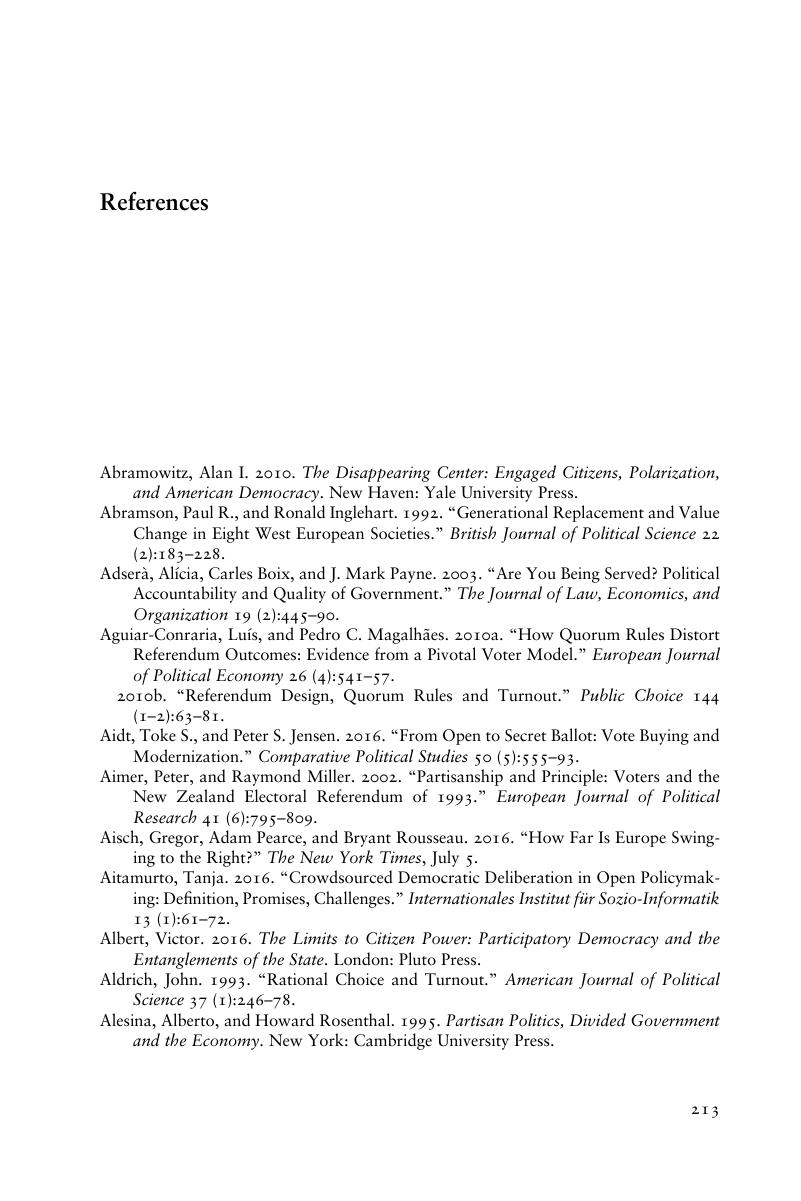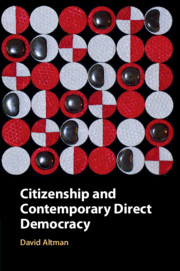Book contents
- Citizenship and Contemporary Direct Democracy
- Citizenship and Contemporary Direct Democracy
- Copyright page
- Dedication
- Contents
- Figures
- Tables
- Preface
- Acknowledgments
- Abbreviations
- 1 Democratic Innovations for Representative Governments
- Part I Origins
- Part II Nature
- Part III Reform
- References
- Index
- References
References
Published online by Cambridge University Press: 21 December 2018
- Citizenship and Contemporary Direct Democracy
- Citizenship and Contemporary Direct Democracy
- Copyright page
- Dedication
- Contents
- Figures
- Tables
- Preface
- Acknowledgments
- Abbreviations
- 1 Democratic Innovations for Representative Governments
- Part I Origins
- Part II Nature
- Part III Reform
- References
- Index
- References
Summary

- Type
- Chapter
- Information
- Citizenship and Contemporary Direct Democracy , pp. 213 - 246Publisher: Cambridge University PressPrint publication year: 2018



